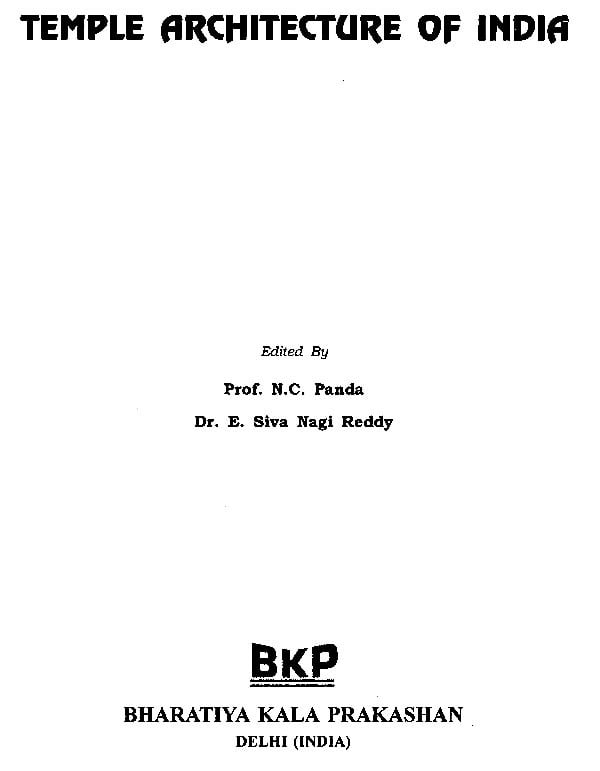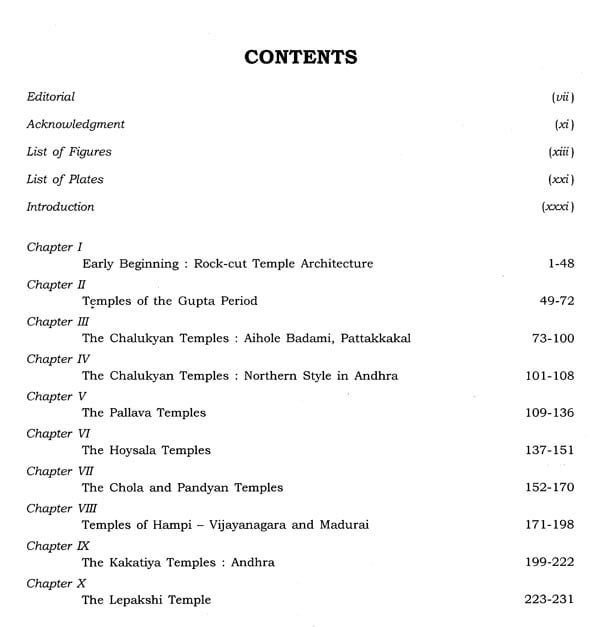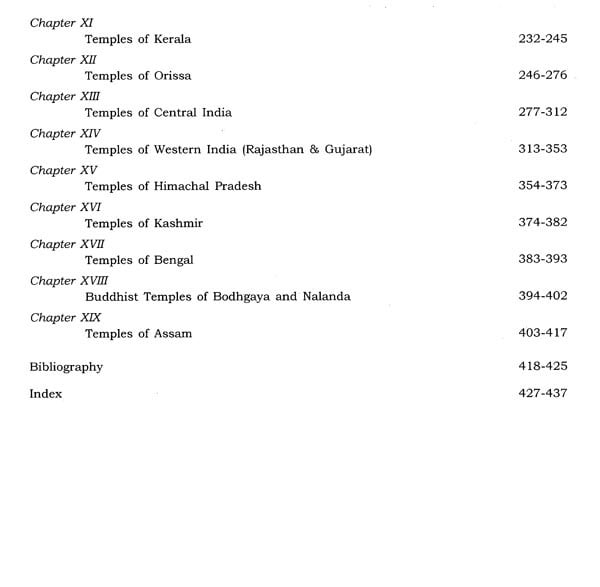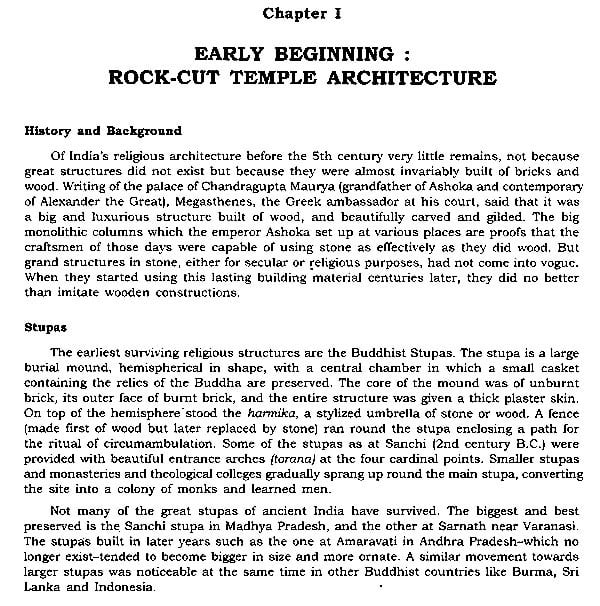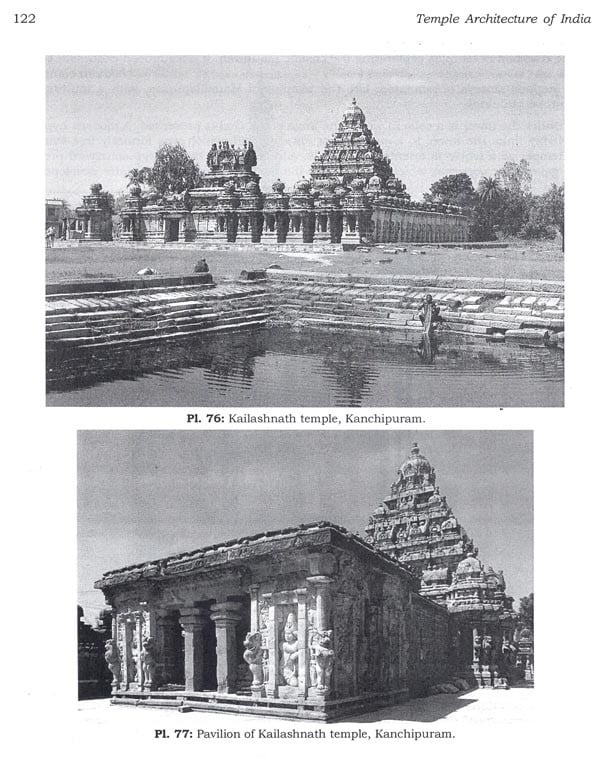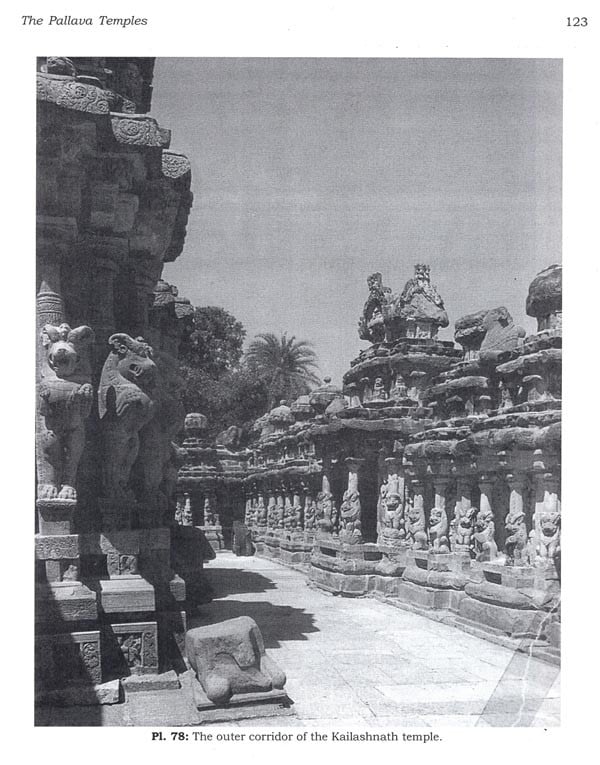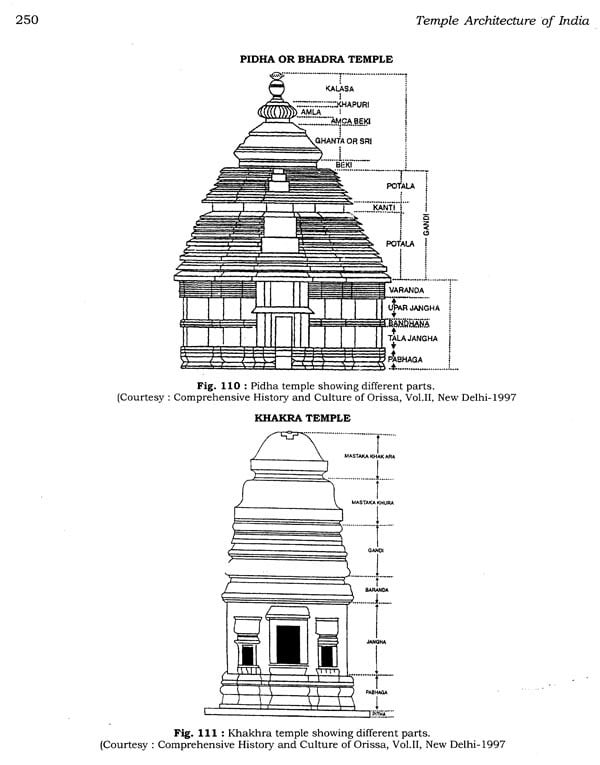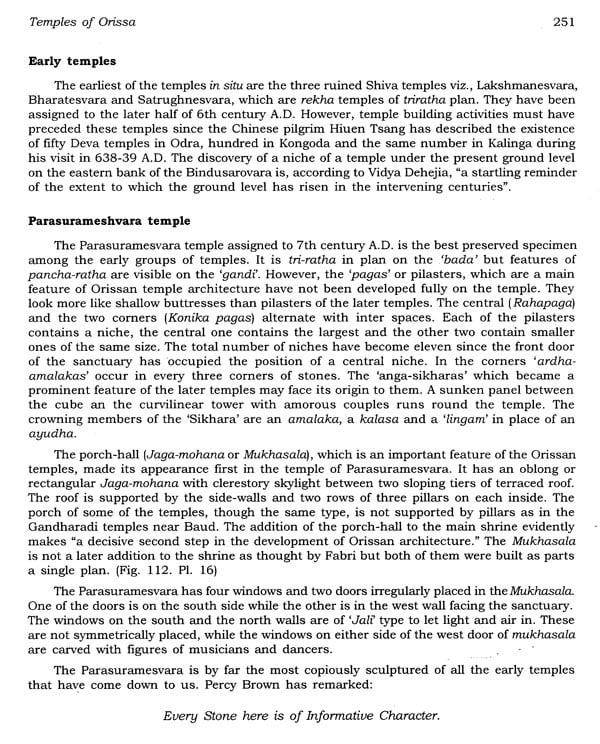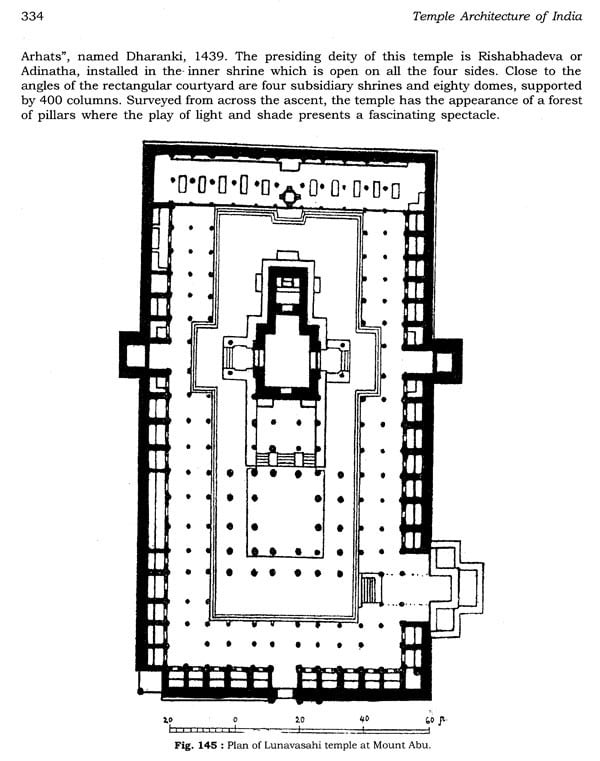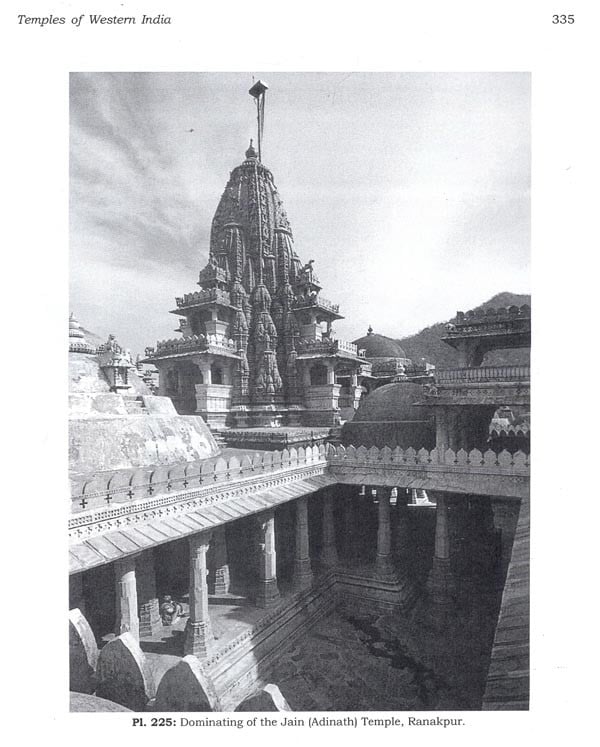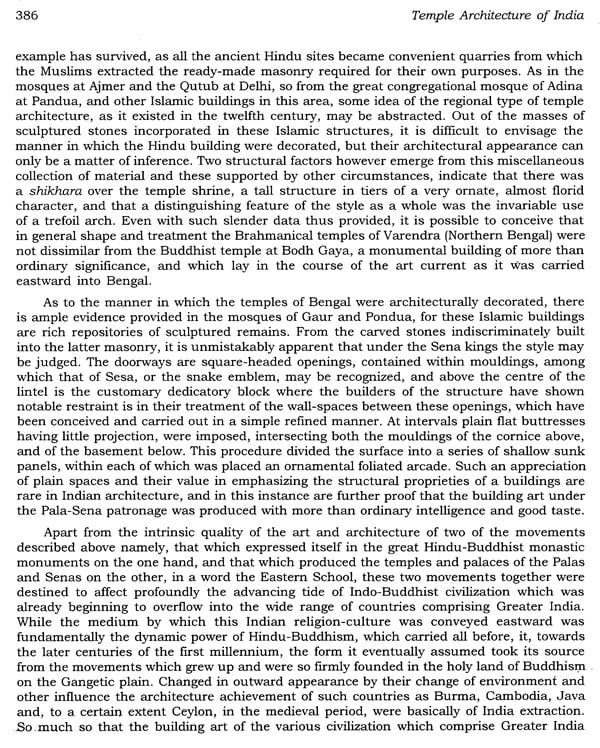
Temple Architecture of India
Book Specification
| Item Code: | AZE693 |
| Author: | N.C. Panda and Siva Nagi Reddy |
| Publisher: | BHARATIYA KALA PRAKASHAN |
| Language: | ENGLISH |
| Edition: | 2019 |
| ISBN: | 9788180903755 |
| Pages: | 468 (Throughout B/w Ilustrations) |
| Cover: | HARDCOVER |
| Other Details | 11.00x9.00 |
| Weight | 1.51 kg |
Book Description
The book first Chapter study of the early beginning of the rock-cut architecture which includes the earliest surviving structures called Buddhist Stupas. The second chapter of the book deals with the study of the temples of the Gupta period (A.D. 350 to 650). The third chapter the temples of the Chalukyan period that were built at Aihole, Badami and Pattadakal in the Bijapur district of Karnataka have been mentioned. The Chalukya dynasty began in the mid fifth century A.D. The capital of Aihole, Badami and Pattadakal saw the construction of a fabulous series of monuments. The fourth chapter Chalukyan temples built on the northern Andhra style. They include the Alampur, Arka-Brahma temple, Vira-Brahma temple, Bala-Brahma temple, Svarga-Brahma temple and Padma-Brahma temple.
The fifth chapter Pallava temples located in southern India where the Pallava dynasty ruled during early fourth to the late ninth century. The sixth chapter draws our attention towards the Hoysala temples cer on Mysore in the state of Ke Ma Hoysala was between the el th and early fourteenth ce The seventh chapter throws light on the Chola and the Pandyan temples.
The eighth chapter dwells on the temples of Hampi Vijayanagara and Madurai. It was kingdoms of southern India. The ninth chapter is focused on the study of the Kakatiya temple Andhra. Ganapatideva (1190-1262). Complete idea Kakatiya temple may had from Ramappa Palampet. The tenth chapter temple located at village Leepakshi in Anantapur district Andhra Pradesh 1538 A.D. eleven describes the temples Kerala which have assimilated many elements from Dravida style. Hindu deities like Vishnu, Rama, Parasurama, Krishna and Bhagawati. The twelfth chapter beautiful contribution on study the temples Orissa the great century the former temple Khajuraho, Gayaraspur, Telikamandir, Naresara, Batesara.
The fourteen chapter Western India, Osian temple and temples Mount Abu, Fifteen chapter Himachal Pradesh wooden temple and stone temple. this A.D. sixteenth chapter stone temples, the Shyama. Raya temple Bishnupur, the eighteen chapter Bodhgaya, Buddhist temples 2nd century.
Thus, the unification of the state under one authority Gupta dynasty engendered national spirit give birth to ideals which transformed every phase thought and every off Among effects of fortuitous synchronization circumstances was produced arts the age, and notably architecture. the of building. progressive movements of fundamental significance are discernible, one relating its the tic character, the other to structural procedure. was when such ormative state there emerged earliest known conception the Hindu house 'i.e., temple, and with the appearance this type of building, architecture composed masonry made its beginning.
**Contents and Sample Pages**
